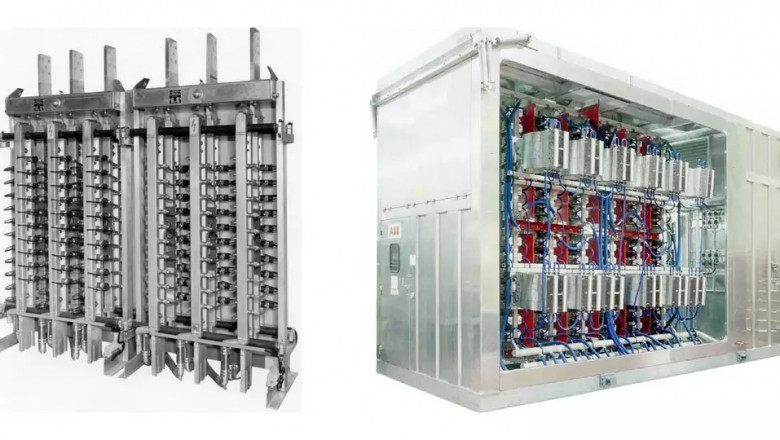As industries rapidly modernize and automation becomes the standard, the importance of high-power rectifiers has taken center stage in the global industrial landscape. These devices, which convert alternating current (AC) to direct current (DC), are the cornerstone of numerous high-voltage applications across multiple sectors. From electrochemical processes to railway traction systems and renewable energy infrastructure, the high-power rectifier market has evolved into a critical component of industrial growth and energy efficiency.
A Backbone for Heavy-Duty Applications
High-power rectifiers play a vital role in energy-intensive industries such as metal refining, electroplating, mining, and chemical production. These sectors require a continuous and stable supply of DC power, which only rectifiers can provide at the scale and efficiency necessary. Their robust build and capacity to handle high voltages and currents ensure uninterrupted operations, reducing downtime and improving productivity.
The importance of rectifiers in these applications is not just technical—it’s economic. By ensuring process continuity and precision control, rectifiers help industries maintain consistent product quality, reduce waste, and lower operational costs. These advantages make high-power rectifiers indispensable for industrial competitiveness and sustainability.
Enabling Energy Transition
The shift toward clean energy has further increased the relevance of high-power rectifiers. In solar and wind energy systems, rectifiers are integral in converting variable AC output from renewable sources into stable DC power. This converted power is then either used directly, stored in batteries, or converted back into AC for grid integration.
Moreover, in green hydrogen production—where water is split into hydrogen and oxygen via electrolysis—high-power rectifiers are crucial. Electrolyzers rely on stable DC power to ensure efficient hydrogen output. As green hydrogen continues to gain momentum as a clean fuel alternative, rectifiers will become central to sustainable energy infrastructure.
Driving Infrastructure and Urban Mobility
Transportation infrastructure, especially electric railways and urban transit systems, is another domain where high-power rectifiers hold unmatched importance. These systems depend on reliable DC supply to power trains, trams, and subways. Rectifiers provide this essential link, converting grid-supplied AC to DC for efficient traction operation.
Additionally, rectifiers are widely deployed in electric vehicle (EV) charging stations. As countries push for wider EV adoption, the need for high-capacity, fast-charging infrastructure is skyrocketing. Rectifiers enable the fast and safe conversion of power to support these high-speed charging demands, making them pivotal in the ongoing EV revolution.
Evolving Technologies and Smart Capabilities
Modern high-power rectifiers are no longer just rugged, static devices. With the integration of digital controls, IoT, and predictive maintenance features, these systems are becoming smarter and more efficient. Sensors embedded within the rectifiers provide real-time data on performance metrics, enabling users to monitor heat levels, voltage consistency, and potential failure points.
This evolution toward intelligent rectifiers is reducing maintenance costs, preventing system failures, and enhancing operational lifespan. Manufacturers are also focusing on modular designs that allow for easy upgrades, scalability, and flexible integration into new and existing systems.
Market Trends and Regional Dynamics
Geographically, Asia-Pacific continues to lead the high-power rectifier market due to heavy industrialization and infrastructure development in countries like China, India, and South Korea. Large-scale manufacturing hubs, mining operations, and expanding renewable energy projects are fueling demand in this region.
North America and Europe, on the other hand, are witnessing demand driven by the transition to renewable energy and modernization of transportation networks. Government initiatives promoting clean energy, hydrogen projects, and electric public transport are directly influencing rectifier deployment.
In emerging economies across Africa and Latin America, demand is gradually picking up, especially in mining and metal processing sectors, supported by increasing foreign investment and energy infrastructure upgrades.
Challenges and Considerations
Despite their growing importance, high-power rectifiers face several market challenges. One significant issue is the high initial cost of advanced rectifier systems. Smaller enterprises or developing regions may find it difficult to justify such investments without long-term guarantees.
Additionally, heat management and energy losses remain technical challenges in high-load applications. To overcome this, manufacturers are investing in better cooling technologies, high-efficiency semiconductors like silicon carbide (SiC), and more compact system designs.
Environmental regulations and energy efficiency standards are also influencing rectifier design and deployment. Companies are under pressure to produce low-emission, energy-efficient rectifiers, pushing the market toward greener innovations.
The Road Ahead: Innovation and Integration
The future of the high-power rectifier market lies in innovation, integration, and customization. Solutions tailored to specific industries and environments—such as marine applications, remote mining sites, and off-grid renewable installations—will gain more traction.
Manufacturers are also increasingly adopting modular systems that can be scaled based on load requirements. This flexibility is especially important in dynamic industries like renewable energy and electric transportation, where power demand can fluctuate significantly.
Digitalization will continue to redefine the rectifier ecosystem. Smart diagnostics, remote monitoring, AI-based fault detection, and cloud integration will soon become standard features, helping organizations boost efficiency and minimize risks.
Conclusion
The importance of high-power rectifiers cannot be overstated in today’s industrial and energy landscape. They are critical enablers of growth, sustainability, and technological progress across sectors. As the world moves toward decarbonization, electrification, and digital transformation, rectifiers will remain at the heart of this transition, quietly powering the backbone of modern infrastructure and innovation. With ongoing advancements and rising global demand, the high-power rectifier market is poised for a future where its importance only grows stronger.






















Comments
0 comment